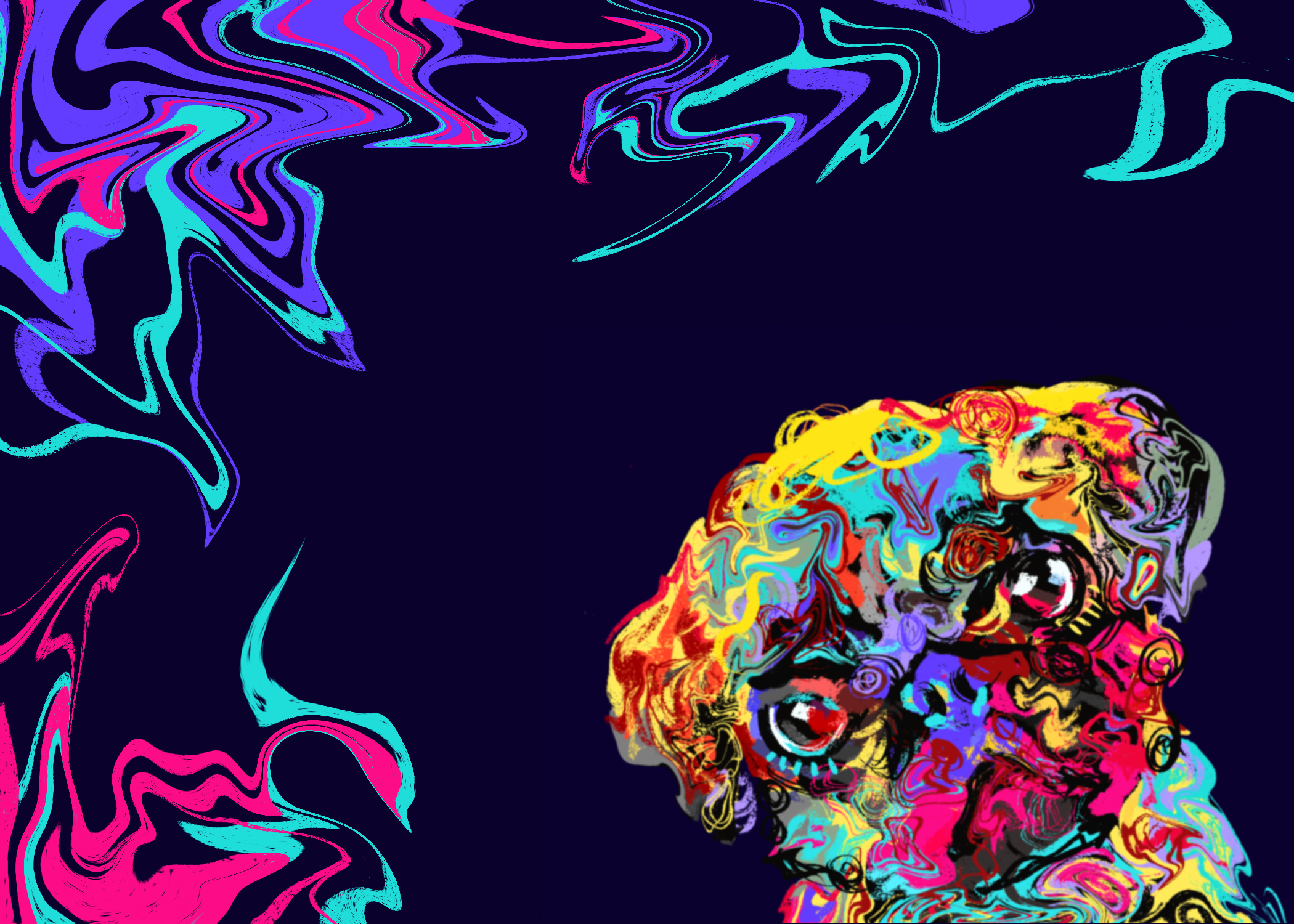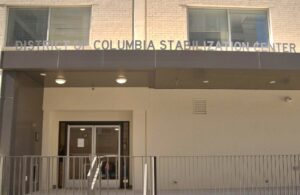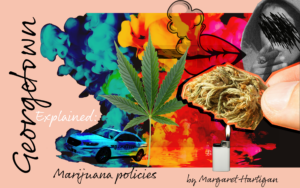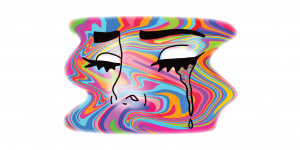Which one of your professors is most likely to offer you LSD?
For Harvard undergraduates in the 1960s, it was psychologist and psychedelic evangelist Timothy Leary. Now, his famous call to “turn on, tune in, and drop out” is resonating with a new generation of students as psychedelics once again grow in prominence on campus, in the District, and beyond.
From mushrooms containing psilocybin to LSD and DMT, psychedelics have long been associated with the American 1960s counterculture, radical politics, and the wealth of music, art, and style they inspired. Now, psychedelics are going mainstream despite remaining illegal in most contexts, with possession carrying heavy, often racially disproportionate, penalties.
From “Manosphere” podcasts like “The Joe Rogan Experience,” where Rogan preaches the power of psychedelics, to university clinical trials, it is clear that how we think and talk about drugs today suggests a departure from the days of “Just Say No,” the widely critiqued anti-drug education campaign. Even Georgetown is getting in on the action.
A 2024 survey conducted at Georgetown and 153 other colleges found that 9.6% of students reported having ever used a hallucinogenic substance, including magic mushrooms, ketamine, LSD, and ecstasy.
At Georgetown, these substances have moved beyond the realm of personal use. Last semester, the Theology department offered Psychedelics and Mysticism, a class examining Hindu and Buddhist mystical traditions as well as psychedelic history and science. This fall, the department will offer a new seminar called Psychedelics and Spiritual Healing, according to Georgetown’s course catalog.
“I was really honestly shocked to see that at such a prestigious institution like Georgetown there would be a class on psychedelics, and so I was instantly drawn to it,” Max Potter (MSB ’25), who took Psychedelics and Mysticism, said.
In many ways, it was a typical Georgetown class. Thirty-two students spent the semester taking notes on lectures, cramming for exams, and writing papers. Discussions, however, were often out of the ordinary, as some students brought stories about their psychedelic experiences, or trips, into the classroom.
One of these students, Sarah (CAS ’26), who spoke to the Voice on the condition that she be identified by a pseudonym, was introduced to mushrooms by a friend during her sophomore year. She said that first trip changed her life. Trips vary depending on the substance, dose, person, and environment, but can include visual hallucinations and feelings of transcendence or mind-body unity.
Sarah has long struggled with anxiety and, although she didn’t take shrooms to “search for a cure,” she stopped taking anti-anxiety medication after that first trip, she said. Since then, she has taken mushrooms every “four months or so,” often with close friends out in nature.
“I wouldn’t really consider myself that anxious of a person at this point, and I really attribute it all to that first trip,” Sarah said. “After every trip, in general, I normally feel very reflective. It does take a while to really think about what you experience after each trip and extract the lessons from it.”
While mushrooms are not an FDA-approved treatment for anxiety, some research has found that psilocybin, a naturally occurring psychedelic compound found in some mushrooms, has positive effects on mood.
People have long found enjoyment, healing, and spiritual and cultural connection through psychedelic experiences. For thousands of years, psychedelics have been central to the healing and knowledge systems of Indigenous peoples around the world. However, colonial violence and criminalization often challenged the preservation of these practices, pushing many sacred traditions and wider use underground.
Sarah’s experiences with mushrooms inspired her to sign up for the Psychedelics and Mysticism class. She grew up Christian and “spiritually inclined,” she said, but the class and her psychedelic experiences have changed her perspectives on spirituality.
“Religion is essentially a framework for you to create your own understanding,” Sarah said. “We are all co-creators—I learned this through the trip—religion is perspective, but you have the power to create whatever experience it is that you want, and that involves the belief system that resonates with you.”
Students the Voice spoke to emphasized the “natural” element of mushrooms as one of the reasons they are drawn to psychedelics.
“I prefer shrooms being from the earth as opposed to something like acid, which is produced in a lab. I think that kind of freaks me out sometimes,” Olivia (CAS ’25), who spoke to the Voice on the condition that she be identified by a pseudonym, said.
However, these same students described consuming mushroom chocolate bars like those made by the brand Polkadot. Many of these bars contain a different synthetic psychoactive compound, 4-AcO-DMT, rather than naturally-occuring psilocybin. Often, people are unaware of this difference.
“A lot of the chocolate bars that have been circulating in the United States have been tested, and they’re not even psilocybin,” Kai Blevins, a PhD candidate at George Washington University studying psychedelic drug culture, said.
Blevins spent months conducting research inside of D.C. stores that sell psychedelics, observing interactions between shopkeepers and often uninformed consumers.
“The fact that people didn’t even know what they were taking was kind of alarming,” Blevins said. “Sometimes people didn’t know what they were getting and dispensaries didn’t know what they were getting.”
Olivia experienced her first bad trip after consuming part of a Polkadot bar.
“It made me feel really self-conscious and really self-aware, when I wanted to feel like the opposite,” she said. “That was the last time that I did a Polkadot bar, because I was just like, ‘I don’t think I should feel this way.’”
Since then, Olivia has been more careful about consuming “genuine” psilocybin products, though Blevins explained that product testing and labeling have limitations.
“Regulation is an active process whereby the government sets standards and then provides a way to meet those standards. That does not happen at all in the gray market here,” Blevins said, referring to the unauthorized psychedelics marketplace. “For folks who are using it medicinally or therapeutically, it matters quite a bit if they’re not getting exactly what [retailers are] saying.”
Around the country, there is little to no government regulation around testing or labeling to ensure that consumers know exactly what they’re getting. In June 2024, nearly 50 people in 24 states became sick after ingesting Diamond Shruumz-brand mushroom chocolate bars, which contained “toxic levels” of a psychedelic compound other than psilocybin. Consumers reported experiencing nausea, abnormal heart rates, seizures, and other serious complications.
Purchasing psychedelics is illegal in the District. However, Initiative 81, which passed in D.C. in 2020, deprioritized arrests and prosecutions associated with common psychedelic plants and fungi, including mushrooms and ayahuasca. While the substances remain illegal, they are now among the “lowest law enforcement priorities.”
Students who spoke with the Voice had purchased magic mushrooms nearby. Sarah described buying them at an unlicensed cannabis store in Georgetown, where it was “pretty easy to get them.”
The Alcoholic Beverage and Cannabis Administration Agency (ABCA) and the Metropolitan Police Department have since padlocked that store, along with at least 40 others in D.C. as part of a campaign to close unlicensed retailers. While this padlocking campaign is primarily targeting cannabis shops, more than 2,790 pounds of mushrooms and mushroom edibles have been seized, according to ABCA records—a reminder that despite their prevalence, purchasing non-medical cannabis and psychedelics remains illegal.
Despite these challenges, psychedelics are reentering American culture through more “official” pathways, Blevins said. Advocates are raising millions in funds, including from the federal government, to conduct clinical trials and win FDA approval for some psychedelics.
“We know exactly what the chemicals are,” Blevins said about the clinical trials. “We know exactly what the doses are. We know who takes it and when, and we have supervision. It’s just so highly regimented.”
There is also a flourishing network of underground chemists and mycologists, or mushroom growers, who are working to fill gaps in mainstream scientific knowledge.
“They are trying to come up with ways to be ethical and to provide the type of knowledge they know that they would want as consumers to other people,” Blevins said. “They’re all sharing information with each other, including standards on how to do testing.”
These self-regulating practices emerge because trust matters when acquiring psychedelics. For Blake (SFS ’26), who spoke to the Voice on the condition that she be identified by her first name, that’s easy because she gets most of her supply from her father. Like Sarah, she grew up in a progressive area with a long history of liberal drug policies, so from an early age, she thought of cannabis and alcohol as being “on the same level.”
When Blake began smoking in early high school, she felt that psychedelics were a natural next step. Around her sophomore year of high school, she and a friend dropped acid for the first time and, soon after, she tried mushrooms. She’s done them at least six times since.
“Shrooms are something I use, and acid is something I did. I’m not gonna do [acid] again,” Blake said.
Similarly, other students who spoke to the Voice expressed that in their experience, mushrooms are less “intense” than other psychedelics, particularly acid.
“I have friends who’ve done acid. I don’t think that is for me personally, it just seems a bit intense. I think the fact that the trip is so long and that it’s really a full body, full sensory experience, like sensory takeover, just seems a little overwhelming,” Olivia said.
Unlike Sarah, Blake and Olivia don’t use mushrooms to connect with nature or seek out a spiritual experience. They’re usually just trying to have a good time. Both take mushrooms every few months before going to concerts or music festivals with friends.
“I just love the music, I always end up crying and I’m like, ‘The lights are so beautiful, the music, oh, my god, we’re all here together,’” Blake said. “For now, it’s just fun.”
For Olivia, the sense of euphoria and connection from mushrooms elevates a night out and brings her and her friends closer together.
“My brain felt like it was being tickled, and there was a lot of laughing, a lot of giggling, and I just felt very close to the two people I was with. My favorite part about shrooms is just the feeling of connection to whomever you’re with,” she said.
Many experts believe these substances deserve more open discussion. Potter, who has never tried psychedelics, agrees.
“If someone is going to do a psychedelic or a type of drug, I think there should be more knowledge. I don’t think ignorance is bliss,” Potter said. “Fostering any type of conversation about [psychedelics], in my opinion, is a good thing, and having a class to do that is a great start.”
Potter believes that students who are curious about psychedelic experiences should have ready access to information about what these substances are, how they work, and how to reduce harm.
“It’s always better to have a conversation about a difficult subject rather than not,” Potter said. “Rather than making something taboo, bring it into the light and let people openly discuss it and let reason win.”





